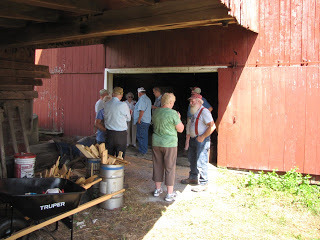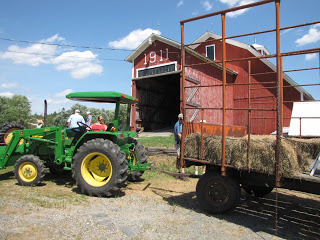Beyond the Myths, Beyond the Assumptions

 When I wrote The Secret Room (it will be released on Sept. 9, 2011 -- hurrah!) and its sister volume, The Long Shadow, I was following a trail marked out by scholar and museum director Jane Williamson at Rokeby. Ms. Williamson uses real letters and diaries to show that the Underground Railroad in Vermont was very different from the myths of heroes, victims, and rescues that commonly occur to people when you say the words "Underground Railroad." Vermont's history and its independence created a Green Mountains world where black people -- often called Africans -- formed communities early in America. Gretchen Holbrook Gerzina, another dedicated researcher, gives us a vivid picture of Africans as Vermont immigrants and settlers in the 1700s, in her book Mr. and Mrs. Prince.
When I wrote The Secret Room (it will be released on Sept. 9, 2011 -- hurrah!) and its sister volume, The Long Shadow, I was following a trail marked out by scholar and museum director Jane Williamson at Rokeby. Ms. Williamson uses real letters and diaries to show that the Underground Railroad in Vermont was very different from the myths of heroes, victims, and rescues that commonly occur to people when you say the words "Underground Railroad." Vermont's history and its independence created a Green Mountains world where black people -- often called Africans -- formed communities early in America. Gretchen Holbrook Gerzina, another dedicated researcher, gives us a vivid picture of Africans as Vermont immigrants and settlers in the 1700s, in her book Mr. and Mrs. Prince.Fergus Bordewich's book Bound for Canaan gives a broad-brush picture of American's Underground Railroad years, the lead-up to the Civil War. But it's the details that Williamson, Gerzina, and others bring forward that shows us the reality of, say, 1750 or 1850 in Vermont.
One reason this is so important is that "myths" continue to flourish. I often hear people around me describe Vermont as a "white-bread place," a place where people have "always" been white-skinned, of Protestant faith, and of English and Scottish heritage. But that's about as far from the truth as possible. Still, it gets woven into the eyes and ears with which people meet this landscape and its heritage.
For instance, the photos here show an "open house" at the 100-year-old barn labeled "Locust Grove Farm" that took place yesterday. We say that "the camera doesn't lie" and it is easy to assume the people at the farm are of that "New England" image from the myth. Actually, many of them are relatives of people who built the barn (one great-great-grandson and his wife and son were there), or settled the farm -- Charles Johnston Wark, born in 1866, with both his father and mother born in Ireland, and his wife Lizzie Ellen Owen -- or those who worked it most recently, the Patenaude family, whose ancestors came from Quebec (Patenaude may be a later-day version of Patenotre). Neighbors include many of Native American descent, especially among those whose roots are French Canadian. And through this town passed people from Syria, Russia, and China -- and by this, I mean "passed through" in the 1800s. Some stayed, like Sam Wah, born in northern China, whose stone in a nearby cemetery marks his death at age 75, in 1921.
By all means, let's celebrate summer in New England. The real New England -- with all its diversity of heritage and thought. We can only be richer for seeking and valuing the truth.
Published on July 24, 2011 10:49
No comments have been added yet.



